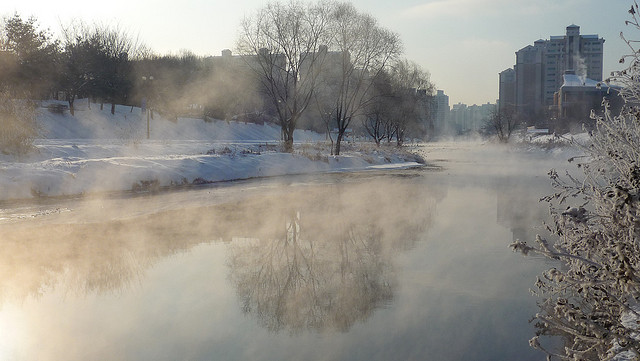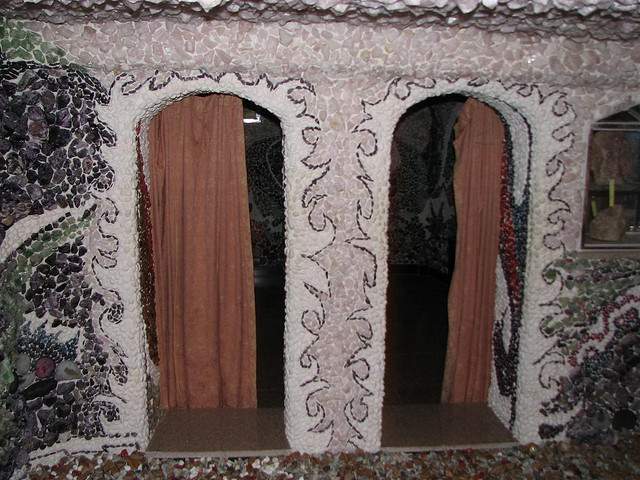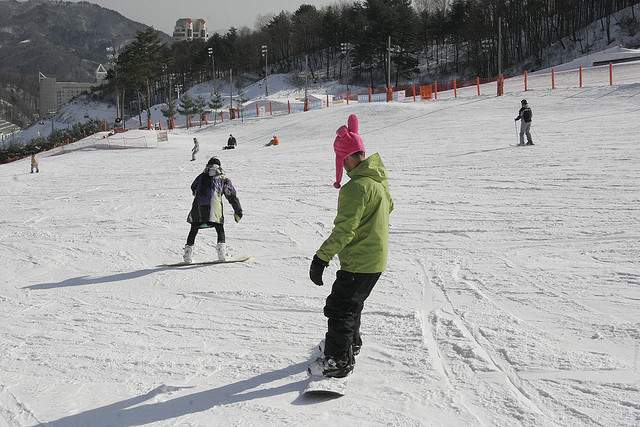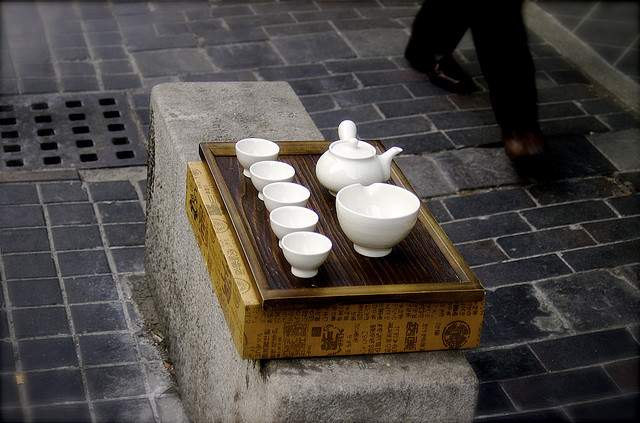South Korea is highly underrated as a travel destination. Often overshadowed by its well-known neighbors Japan and China, as well as headline-grabbing other half, North Korea, the southern part of the peninsula has been off-the-beaten-track for years. But things in Korea are changing. Lonely Planet listed South Korea as THE place to visit in 2013, Jeju island was voted one of the 7th wonders of nature this year, Gangnam Style is still topping the charts (you know you love it!), and South Korea is #9 on BootsnAll’s 2013 Indie Travel Destinations, but tourism is definitely on the increase, and there has never been a better time to visit.

“Now what does that have to do with winter?” I hear you ask! Well, while the allure of warm summer nights and cherry blossom springs have drawn a few inquisitive travelers (and thousands of ESL teachers) to the peninsula in the past, not many people venture out to this side of the world once the temperatures drop below minus. Last year; however, it was announced that Korea would be hosting the next winter Olympics, and the country stepped up to the challenge boldly, developing winter sports and activities at the kind of rapid rate which defines South Korean culture in all its modern glory. It’s not your typical winter vacation – but then that’s all part of the appeal!
So what is there to do in Korea during the winters?
Warm-up and scrub-down at the jimjilbang

When the weather outside is frightful, there is nothing better on earth than a Korean jimjilbang (public bath house). So long as you can cope with mandatory nudity (don’t worry, it is gender segregated), then you can’t help but fall in love with this quintessential Korean experience. Bubbling tubs of water, steamy saunas, and warm on-the-floor sleeping rooms make up the extent of the traditional jimjilbang, although some offer quirky variations such as baths infused with medicinal herbs and walls inlayed with healing crystals and woods.
[social]
Since most jimjilbangs stay open 24 hours and have a special areas for sleeping, jimjilbangs can double up as cheap accommodation for budget-conscious travelers as the entrance fee is usually around 10,000 won ($10USD) or less.
Jimjilbangs are also a great place to soak up and strip down Korean culture (literally). In such a fast-paced and hardworking country, it can be a rarity to see Koreans relax. At the jimjilbang, people really let loose. Families come to spend time together and even play cards and eat snacks in the communal rooms, grandmothers squat on chairs in front of vanity mirrors to wash the hair of their younger family members, men host leisurely business meetings with their closest clients, and young couples put on matching face packs and flirt in the co-ed areas.
Take a bite out of Korea’s seasonal dishes

As temperatures dip in the peninsula, the cuisine peaks. Korean food, vast and versatile in nature, literally wraps itself around the four seasons, with different dishes coming out at different times of year, perfectly suited to the weather.
The national dish, kimchi (fermented vegetables mixed with spices), was traditionally the only vegetable that was eaten during winter, and its invention came as a solution to the problem of malnutrition during cooler periods when fresh fruit and veg were unavailable. Nowadays, of course, you can get all the fresh vegetables you want during winter, but Koreans still follow tradition by preparing their kimchi in the pre-winter period and breaking out a fresh batch once it gets cold.
But there is a lot more to Korean cuisine than kimchi. Koreans are connoisseurs of soups, stews, BBQs, and street food, all typically spicy and heavy and therefore much better suited to the winter. Doengjang jiggae (a soup made from fermented bean paste, similar to the Japanese miso soup), kimchi jiggae (a stew made from boiled kimchi and red chilli paste) and samgyetang (a chicken and ginseng soup) are all popular soup-based favourites. Stews vary widely and often include tasty chunks of on-the-bone meat, usually combined with plenty of chili to really warm you up. BBQs often define Korean cuisine internationally, and the process of sitting in a BBQ restaurant roasting meat over a hot plate on your table is the ideal way to shake off the winter chills.
And then there is the street food! Where to start? Simply head to the center of any city to watch as ajummas (old women) plunge dogaebi hotdogs (sausages coated in french fries) into deep fryers, bake bungeoppang (fish-shaped wafers filled with red bean paste) in ovens, roast chestnuts on portable carts, boil beondegi (silkworm larvae) over steaming pots, and bake sweet potatoes in large iron barrels. And that’s just the tip of the iceberg!
Skate rings around Kim Yuna at an outdoor ice rink

OK, I can’t promise you will see Kim Yuna – unless you attend the Olympics – but as winter sets in, the outdoor ice rinks come out, and plenty of Korean’s desperate to follow in the footsteps of their national hero put on their skates and get active.
Most of the outdoor ice rinks are in the major cities such as Seoul and Busan and skates can be rented for as little as 1000 won (roughly $1USD). Seoul boasts the biggest rink, which is set up in Seoul Plaza, right in the heart of the city, every year from January to February. It is even possible to pick up a personal trainer at the rink to teach you a few key tricks!
Fish for mountain trout at one of Korea’s ice festivals

As rivers freeze over, a whole host of special winter activities begin to take place. Ice festivals are relatively new to Korea but are steadily gaining in popularity each year. There are several festivals to choose from, usually taking place between January and February, and the major draw of them is the ice fishing events. Koreans flock in thousands to take up a spot on the ice, dig a small hole, and dangle a rod into the icy water in an attempt to catch mountain trout. Once caught, the fish can be taken to a nearby stall where a chef will deftly kill it and chop it up before serving it either cooked or raw, depending on your taste. In addition to this, the festivals often hold ice fishing competitions where contestants are encouraged to jump into an icy pit of water in order to catch fish with their bare hands! Luckily an on-site spa is usually set up nearby to breathe life back into frozen limbs.
In addition to the ice fishing, ice festivals tend to include several other events and activities such as ice football, sledding, and even driving quad bikes on the ice. You can also check out a museum of ice sculptures.
Go snowboarding/skiing at one of Korea’s premier ski resorts

It’s no Switzerland, and you certainly won’t find log fires and old wood cabins, but ski resorts in Korea have their own unique charm and come at a fraction of the cost of European skiing holidays. You can usually rent your gear and gain entrance to the resort for less than 60,000 won ($60 USD). Since Korea is mostly mountainous and gets a large snowfall each year, it creates the perfect conditions for winter sports. Resorts are numerous, and most have their own themes and levels of ski slope. Some resorts offer night skiing, and the twinkling lights illuminating the snowy slopes create a very festive ambience. The frequent blasts of K-pop playing from speakers dotted around the slopes only add to the Korean experience.
Most ski resorts in Korea are based in Gangwon-do, although a few are scattered around the rest of the country, with some very close to Seoul. As the country prepares for the winter Olympics, transport offered to and from the resorts is getting better and better. Resorts are generally uber-modern (this is Korea, after all) and are mostly surrounded by a range of high-rise hotels and hostels. If you are traveling with a group, you can save some money by renting out a Minbak (an apartment or lodge that usually includes a kitchen, bathroom, and communal room for on-the-floor sleeping). Save even more money by cramming as many people as humanly possible into your Minbak so that you each pay virtually nothing!
The Korea Tourism board website offers some excellent advice to help you choose the right ski resort as well as book transport and accommodation.
Experience the winter wonderland of Korea’s snow-smothered national parks

Korean’s love hiking, and climbing a mountain or two is almost a rite of passage for travelers. Although generally favored in spring and summer, the treks through Korea’s mountainous national parks are quite beautiful in winter. Korean winters are characterized by their clear blue skies and contrasted against the powdery white landscape, and the sun still shines. The hushed frozen scenery takes on a Narnia-like appeal, and the lack of crowds give the snow-capped trees and icy peaks a magical sense of calm. Most trails are well-marked and frequently used, and since hiking is so popular, there is no end to shops selling hiking gear at decent prices.
There are many different treks to choose from in Korea, but some of the more popular include Hallasan, Seoraksan, and Jirisan National parks.
Hallasan National Park is centered around Mt.Hallasan, a dormant volcano and the largest mountain in Korea, based in Jeju Island, off the south coast. The temperatures in Jeju are some of the best in the country during winter, and many Korean’s come here to escape the cold. The snowy summit of Mt.Hallasan makes for a picturesque backdrop for those wishing to trek through the national park, and for a perilous and exciting climb for those daring enough to scale the mountain itself.
The Seoraksan Nature Reserve is a spectacular and bio-diverse area with several mist-swathed snowy peaks poking out from an enclave of dense forest and Shilla-era temples. Natural hot springs are scattered around the park, and wildlife is abundant – watch out for moon bears!
Jirisan was Korea’s first ever national park, and it mostly consists of mountainous peaks and deep valleys. There are various trails throughout the park, but most are for more serious hikers, taking several days for each trek. The evergreen forests capped with snow make this park really special in the winter months.
Warm up with a cuppa at a traditional tea house

Tea ceremonies have been a part of Korean culture for over a thousand years, so it is no surprise that there are more than a few great places to get a cup of tea in the peninsula. Although most Koreans now opt for modern coffee shops to get their caffeine fix, there are still many tea houses around the country keeping up old traditions and serving tea in nostalgic settings. The Insadong area of Seoul is particularly famous for its tea houses, and walking past the many hanok (traditional Korean houses) in winter, the redolent fragrance of herbal tea is as alluring as the under-the-floor-heating offered inside. Most tea houses have a quaint and mellow ambience, offering a little respite from the unerringly fast pace of modern day Korea. During the winter, varieties of tea such as quince and honey are the perfect pick-me-up.
Practical Information

Get in: Flights in and out of Korea tend to be pricey, but you can find cheaper options when traveling from other destinations in Asia. Air Asia offers cheap flights from SE Asia, provided that you book in advance. It is also possible to travel by boat from Japan and China, which is an inexpensive and environmentally friendly option.
Get around: The peninsula itself is a relatively easy place to travel around, with high-speed trains providing speedy routes around the country. Trains can be booked online but can be relatively expensive, and they do tend to book out quite quickly. A cheaper option is the buses. There are bus stations at every major city and town, and the official Korean tourism website offers a comprehensive list of bus times and schedules. Alternatively, if you have an international driving license, rent a car to get around. The roads are excellent and well sign posted.
Accommodations: Accommodation in Korea can be costly. Stay clear of the hotels to keep your budget down and try out these alternatives:
- Minbak – If you are traveling with a group, minbaks are the perfect accommodation. They are little apartments offering communal on-the-floor-sleeping along with a kitchen and bathroom for reasonable prices. It can be hard to find internet listings for these in English, but the Korean Tourism board does advertise a few for most cities on their website, along with contact numbers.
- Jimjilbang – Jimjilbangs – Korean bath houses – usually provide sleeping rooms. The cost of entrance is normally around $10USD and you can make use of the many hot baths, and free toiletries, ensuring that you get a cheap night’s sleep and leave fresh in the morning!
- Couchsurf – Couchsurfing is very popular in Korea, and it’s a great way to get around and meet new people, especially for those traveling alone. Be warned though, you may find yourself in a very small apartment with your couchsurfing host as living space is limited and flats tend to be on the tiny side, particularly in the larger cities, so choose your host wisely!
- Hostels – There are some excellent hostels in Korea, most of which can easily be found with a quick search on google. Expect to pay around $20USD or more though.
- Love Motels – These insalubrious motels with their 24 hour check-ins and dubious in-room DVD options may not be everyone’s cup of tea, but if you are at a loss for where to stay late at night, these tend to be inexpensive and surprisingly luxurious.
Where to eat?
There is no end to good food in Korea. Night markets in the bigger cities are the best place to pick up tasty street food and quick nibbles. In the coastal areas, head to the fish markets to get fresh seafood cooked up before your eyes or served raw (and often still wriggling!) on your plate. For bigger meals, take your pick of whatever café or restaurant you come across. Dining out is a national pastime in S. Korea, and the quality of food is consistently high. Do it as the locals do, and order your meal with a plethora of banchan (side dishes), and wash it down with a bottle or two of soju (the local alcohol).
Costs
It is best to budget for around $50+ a day in Korea, although in extreme cases it may be possible to survive on less than this if you don’t take as many buses and trains, and stay in very cheap accommodations.
Here are some average per day costs you can expect to incur (all in US dollars):
- A night in a hostel: $20
- A meal at a restaurant: $5- $20
- A drink in a bar: $2 – $10
- A one-way metro ticket: $1.50
- A bus from Seoul to Busan: $15+
- A train from Seoul to Busan: $30+
- Ski pass: $40+
- Entrance fee for national parks: $2-$3
Fore more information on traveling to S. Korea, check out the following articles and resources:
- Read our South Korea Indie Travel Guide
- Find out why South Korea made our Top Indie Travel Destinations of 2013 list
- Read 5 Off the Beaten Track Spots to See in South Korea
- Book a flight to Seoul
- Find a hostel in South Korea
Photo credits: buddhaflow, LWY, namho, sellyourseoul, mendhack, edans, d’n’c, Brucke-Osteuropa
